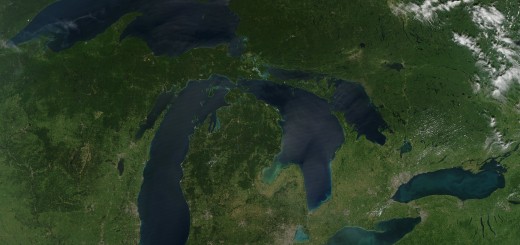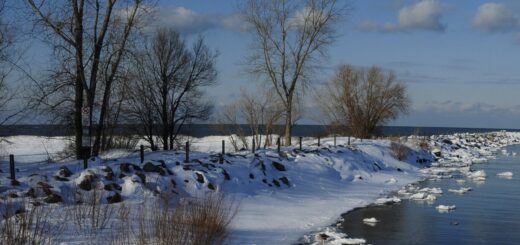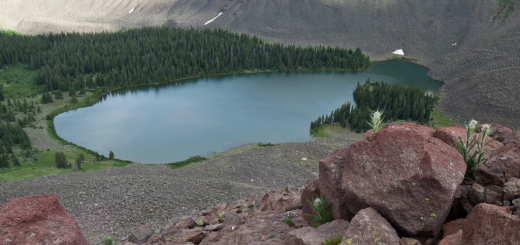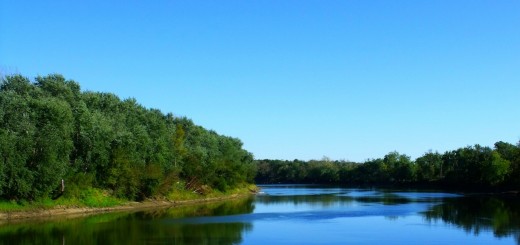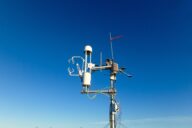Research Summary: Genetic And Environmental Controls On Nitrous Oxide Accumulation In Lakes
0Abstract
We studied potential links between environmental factors, nitrous oxide (N2O) accumulation, and genetic indicators of nitrite and N2O reducing bacteria in 12 boreal lakes. Denitrifying bacteria were investigated by quantifying genes encoding nitrite and N2O reductases (nirS/nirKand nosZ, respectively, including the two phylogenetically distinct clades nosZI and nosZII) in lake sediments. Summertime N2O accumulation and hypolimnetic nitrate concentrations were positively correlated both at the inter-lake scale and within a depth transect of an individual lake (Lake Vanajavesi). The variability in the individual nirS, nirK, nosZI, and nosZII gene abundances was high (up to tenfold) among the lakes, which allowed us to study the expected links between the ecosystem’s nir-vs-nos gene inventories and N2O accumulation. Inter-lake variation in N2O accumulation was indeed connected to the relative abundance of nitrite versus N2O reductase genes, i.e. the (nirS+nirK)/nosZI gene ratio. In addition, the ratios of (nirS+nirK)/nosZI at the inter-lake scale and (nirS+nirK)/nosZI+II within Lake Vanajavesi correlated positively with nitrate availability. The results suggest that ambient nitrate concentration can be an important modulator of the N2O accumulation in lake ecosystems, either directly by increasing the overall rate of denitrification or indirectly by controlling the balance of nitrite versus N2O reductase carrying organisms.

Lake Vanajavesi. (Credit: Wikimedia Commons User Alessio Damato via Creative Commons 3.0)
Introduction
Nitrous oxide (N2O) is an important greenhouse gas and the single most important ozone destroying chemical [1]. N2O in the biosphere is produced as an intermediate molecule in denitrification or nitrifier-denitrification, or as a by-product during nitrification or dissimilatory nitrate reduction to ammonium (DNRA) [2, 3]. The denitrification pathway includes four enzymatically catalyzed reductive steps: nitrate reduction (nar), nitrite reduction (nir), nitric oxide reduction (nor), and nitrous oxide reduction (nos) [4]. Reduction of nitrite, where the first gaseous form of fixed nitrogen (N) (i.e. NO) is produced, is catalyzed by two analogous genes:nirK and nirS genes encoding a copper nitrite reductase and a cytochrome cd1-nitrite reductase, respectively [4]. These two genes prevail in different organisms and their differential distributions in nature seem to be modulated by the redoxconditions, with nirS being preferentially expressed under low dissolved oxygen conditions [5, 6]. Recent studies have also revealed that nosZ genes encoding N2O reductase actually belong to two phylogenetically distinct clades [7, 8], here referred to as nosZI and nosZII, which need to be analyzed by separate PCR primer sets. As with nir genes, the relative importance of nos genes seems to systematically differ between habitats and with environmental conditions [8], yet the exact controls that modulate their relative abundance in nature are uncertain. Some denitrifiers are lacking the nosZ gene completely and perform the truncated denitrification pathway, where N2O is produced as an end-product [9]. In fact, genome sequencing showed that one third of the cultivated denitrifying bacteria lack the nosZ gene [10].
Since denitrifier community structure is likely to have an effect on net N2O production and emission [11, 12], denitrifier communities have been studied through the analysis of sequence variation and/or the abundance of nirS, nirK, and nosZ genes in many ecosystems [13, 14, 15,16, 17]. High availability of nitrate and nitrite has been shown to be conducive to N2O accumulation [18, 19], fostering the increase the N2O/(N2O+N2) ratio in the gaseous denitrification products [20, 21]. Such correlations may simply indicate nitrate-induced enhancement of denitrification rates (and thus N2O accumulation), but they may also be the result of microbial community adaptation. Philippot et al. [22], for example, demonstrated that the relative abundance of the nosZ gene was a strong predictor of the N2O/(N2O+N2) production ratio.
In soils, microbially produced N2O is likely lost to the atmosphere by turbulent diffusive escape. In contrast, in aquatic environments, the diffusivity of gases is much slower (Kz values on the order of 10−5 to 10−6 cm2 s−1, [23]), reducing diffusive loss rates and improving the N2O availability for nosZ carrying bacteria. More complete denitrification and lower N2O/N2 gas emission ratios should, therefore, be expected for the aquatic versus soil environments. Still, lake ecosystems have shown to be important sites of N2O emissions [19, 24], and, as in soils, N2O production and accumulation in lakes appears to be dependent on the ambient nitrate and oxygen concentrations [25, 26, 24, 27]. Although the importance of lacustrine N2O production is well recognized [19, 26], and albeit the fact that benthic denitrifier community structure has been studied in some lakes [28, 29], it is not known whether variations in the accumulation of N2O are mostly directly dependent on the environmental conditions, or whether they rather are indirectly constrained by the denitrifying community structure. With some recent exceptions [7,8] the role of the nosZII clade remained mostly unconsidered in this context.
Here, we evaluated genetic and environmental factors that likely modulate N2O production and accumulation in lake ecosystems, especially focusing on the benthic abundance of nirS, nirK,nosZI, and nosZII genes during the summertime N2O accumulation period. Anticipating close links between nitrate concentrations and the N2O accumulation, we hypothesized 1) that high hypolimnetic nitrate concentrations would decrease the relative abundance of the nosZ genes (i.e., increase the nir/nos ratio) within lacustrine sediments, and 2) that higher nir/nos ratios would lead to enhanced N2O accumulation. The linkage between benthic denitrification gene frequency and N2O accumulation was assessed in an inter-lake study of 12 boreal lakes in southern Finland, pooling the lakes into two groups based on their hypolimnetic nitrate concentrations (high-NO3−-lakes and low-NO3−-lakes). In addition, denitrification gene abundance and N2O accumulation was investigated along a littoral-to-pelagic transect in a large stratified lake (Vanajavesi) with relatively high hypolimnetic nitrate levels (24.0−44.9 μmol l−1).
Full study, including methods, results and discussion, published under open-access license in PLOS ONE.




